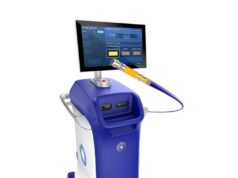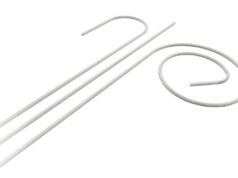The National Institute for Health and Care Excellence (NICE) has issued a final appraisal determination (FAD) for edoxaban (Lixiana/Savaysa, Daiichi Sankyo) for the prevention of strokes and systemic embolism in patients suffering from non-valvular atrial fibrillation.
The draft guidance states: “Edoxaban is recommended, within its marketing authorisation, as an option for preventing stroke and systemic embolism in adults with non-valvular atrial fibrillation with one or more risk factors, including congestive heart failure, hypertension, diabetes, prior stroke or transient ischaemic attack and age 75 years or older.
It adds: “The Committee concluded that taking all of the analyses into account, edoxaban was cost effective compared with warfarin and could be recommended as an alternative to warfarin for preventing stroke and systemic embolism in people with non-valvular atrial fibrillation who have one or more risk factors for stroke.”
Martin Cowie, professor of cardiology at Imperial College London, UK, and a noted researcher into atrial fibrillation, says edoxaban gave doctors the ability to better tailor medicines to individual patients. “A few years ago,” he explains, “all we had to prevent strokes in atrial fibrillation patients was warfarin, which imposes many lifestyle restrictions on patients and needs monitoring with a blood test system known as INR. Now we are spoilt for choice with modern blood-thinning drugs that do not need INR monitoring and are easy for patients to live with.”
In June 2014 the National Institute for Health and Care Excellence (NICE) published a revised guideline on the management of atrial fibrillation, updating its advice from its original guideline of 2006. The revised guideline said some 835,000 people in England alone have atrial fibrillation.
In addition there may be another 250,000 people who are undiagnosed, according to a NICE press release issued to accompany the guideline. NICE put the prevalence of atrial fibrillation in England at 2%-equivalent to one in 50 of the population.
The NICE approval comes shortly after edoxaban received simultaneous European marketing authorisation for two indications:
- Treatment of deep vein thrombosis (DVT) and pulmonary embolism (PE), and prevention of recurrent DVT and PE in adults;
- Prevention of stroke and systemic embolism in adult patients with non-valvular atrial fibrillation with one or more risk factors, such as congestive heart failure, hypertension, age ≥75 years, diabetes mellitus, prior stroke or transient ischaemic attack.
NICE issued a FAD for edoxaban for the treatment of deep vein thrombosis and pulmonary embolism, and prevention of recurrent DVT and PE in adults in July this year.
The draft NICE FAD for edoxaban noted: “The Committee was aware that non-valvular atrial fibrillation is well-managed with warfarin for many people, but is associated with a number of problems including the need for regular monitoring and dose adjustment, and it has multiple food and drug interactions.”
“The Committee accepted the limitations of warfarin therapy and the considerable impact it may have on people who take it, and recognised the potential benefits of edoxaban for people with non-valvular atrial fibrillation.”
The FAD continued: “The Committee concluded that edoxaban was as clinically effective as warfarin for the primary efficacy outcome of reducing stroke (ischaemic and haemorrhagic) and systemic embolism, and had nearly half the rate of haemorrhagic stroke events compared to warfarin.”
Simon Clough, UK managing director for Daiichi Sankyo, said: “We are very pleased to be able to offer patients and doctors in England and Wales a new, convenient-to-use alternative in the treatment armoury against atrial fibrillation-related illness. It is extremely gratifying that we have received NICE FADs for both atrial fibrillation and VTE within a very short time after gaining European authorisation.”
The key clinical evidence for edoxaban in atrial fibrillation came from the ENGAGE AF-TIMI 48 global phase 3 study. The study investigated once-daily edoxaban in comparison to warfarin in 21,105 patients with non-valvular atrial fibrillation.
This represents the largest and longest trial with a novel anticoagulant in patients with atrial fibrillation performed to date, with a median follow-up of 2.8 years.
NICE said the trial was of good quality, well-designed and generalisable to clinical practice in the UK.









